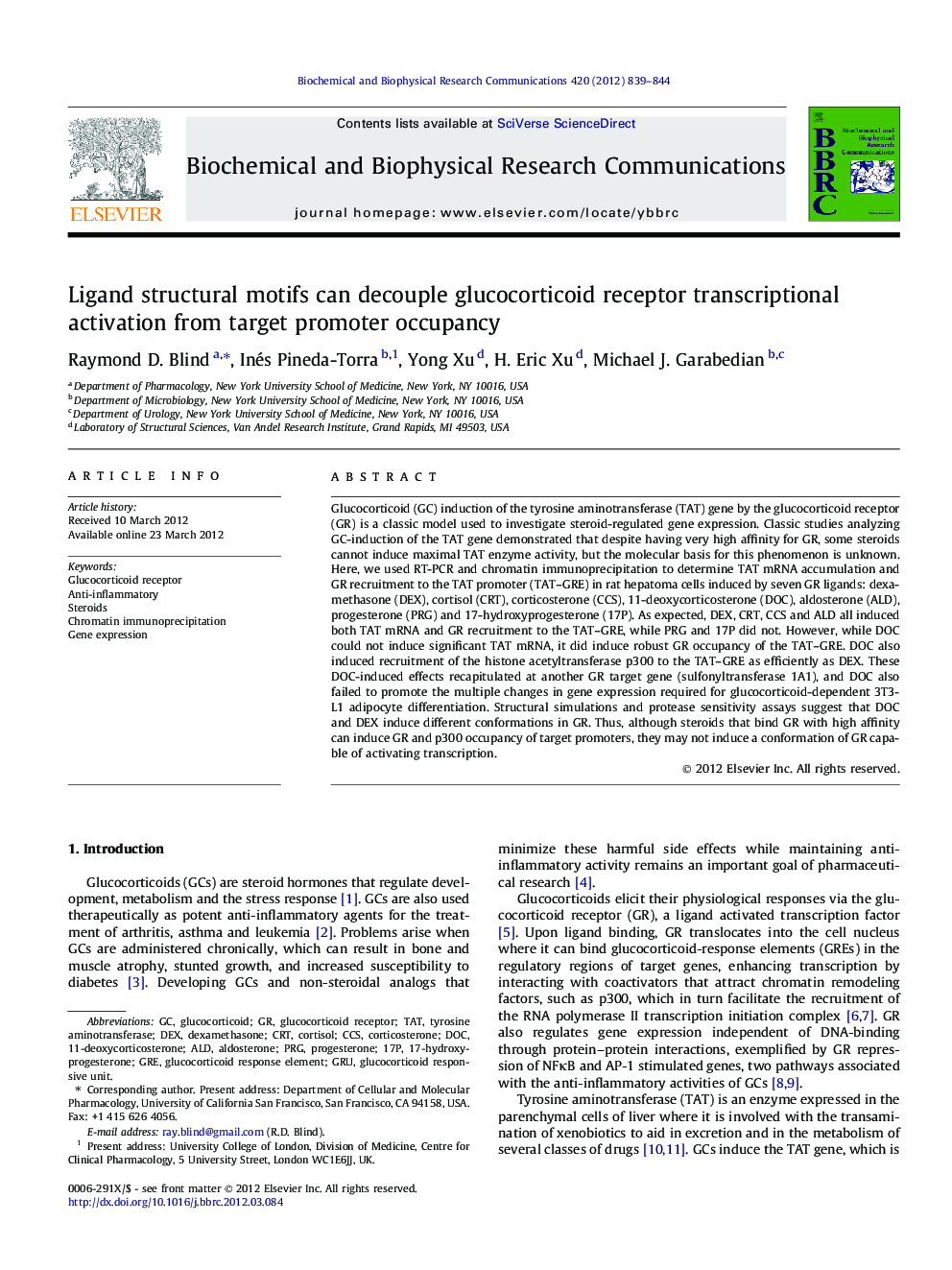| کد مقاله | کد نشریه | سال انتشار | مقاله انگلیسی | نسخه تمام متن |
|---|---|---|---|---|
| 1929570 | 1536782 | 2012 | 6 صفحه PDF | دانلود رایگان |

Glucocorticoid (GC) induction of the tyrosine aminotransferase (TAT) gene by the glucocorticoid receptor (GR) is a classic model used to investigate steroid-regulated gene expression. Classic studies analyzing GC-induction of the TAT gene demonstrated that despite having very high affinity for GR, some steroids cannot induce maximal TAT enzyme activity, but the molecular basis for this phenomenon is unknown. Here, we used RT-PCR and chromatin immunoprecipitation to determine TAT mRNA accumulation and GR recruitment to the TAT promoter (TAT–GRE) in rat hepatoma cells induced by seven GR ligands: dexamethasone (DEX), cortisol (CRT), corticosterone (CCS), 11-deoxycorticosterone (DOC), aldosterone (ALD), progesterone (PRG) and 17-hydroxyprogesterone (17P). As expected, DEX, CRT, CCS and ALD all induced both TAT mRNA and GR recruitment to the TAT–GRE, while PRG and 17P did not. However, while DOC could not induce significant TAT mRNA, it did induce robust GR occupancy of the TAT–GRE. DOC also induced recruitment of the histone acetyltransferase p300 to the TAT–GRE as efficiently as DEX. These DOC-induced effects recapitulated at another GR target gene (sulfonyltransferase 1A1), and DOC also failed to promote the multiple changes in gene expression required for glucocorticoid-dependent 3T3-L1 adipocyte differentiation. Structural simulations and protease sensitivity assays suggest that DOC and DEX induce different conformations in GR. Thus, although steroids that bind GR with high affinity can induce GR and p300 occupancy of target promoters, they may not induce a conformation of GR capable of activating transcription.
► 11-Deoxycorticosterone (DOC) induces GR and p300 occupancy of two target genes.
► DOC does not induce mRNA of these two genes.
► DOC fails to induce complex glucocorticoid-dependent adipocyte differentiation.
► Protease sensitivity and modeling show DOC and DEX change GR structure.
Journal: Biochemical and Biophysical Research Communications - Volume 420, Issue 4, 20 April 2012, Pages 839–844